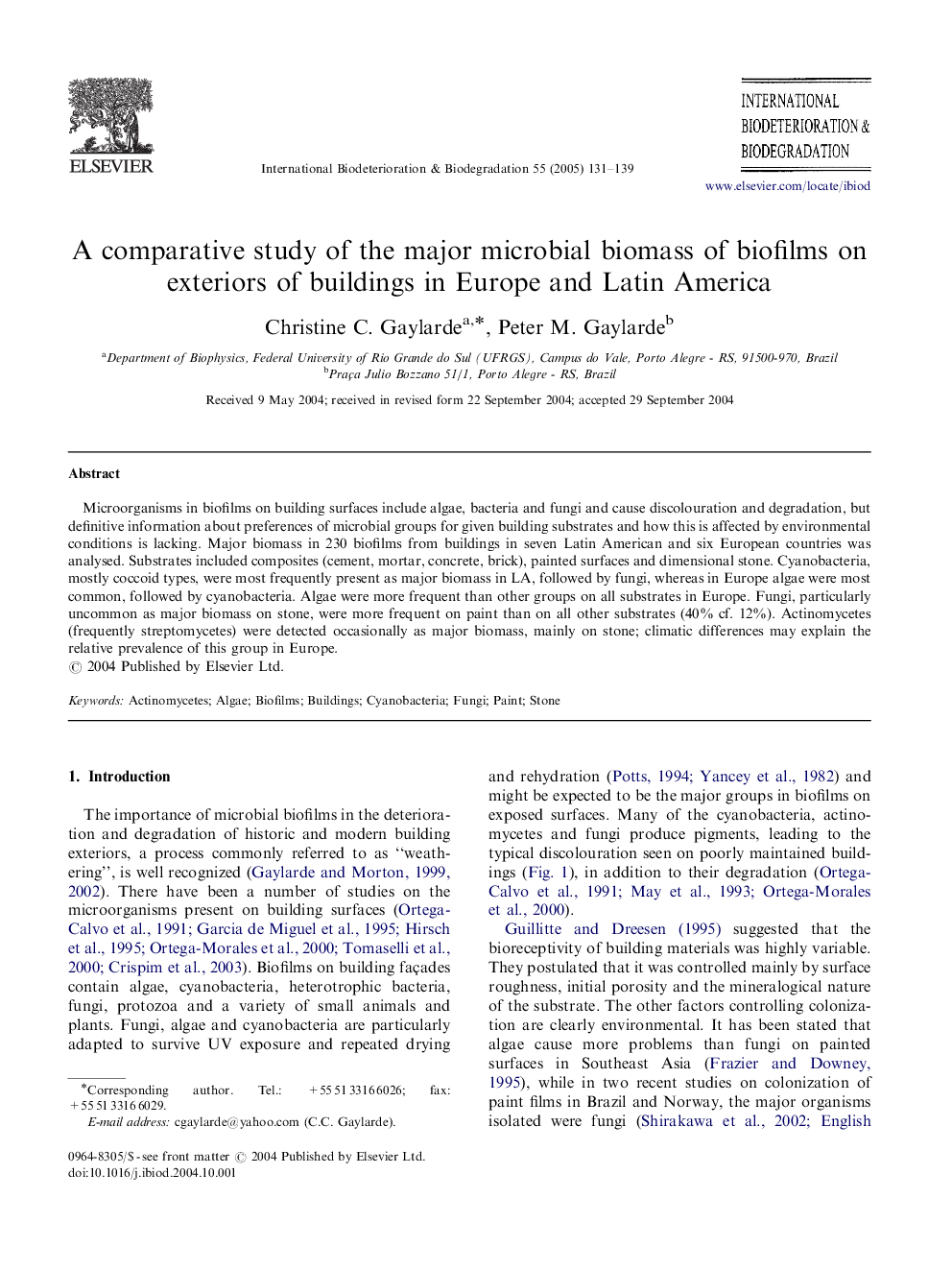| Article ID | Journal | Published Year | Pages | File Type |
|---|---|---|---|---|
| 9442424 | International Biodeterioration & Biodegradation | 2005 | 9 Pages |
Abstract
Microorganisms in biofilms on building surfaces include algae, bacteria and fungi and cause discolouration and degradation, but definitive information about preferences of microbial groups for given building substrates and how this is affected by environmental conditions is lacking. Major biomass in 230 biofilms from buildings in seven Latin American and six European countries was analysed. Substrates included composites (cement, mortar, concrete, brick), painted surfaces and dimensional stone. Cyanobacteria, mostly coccoid types, were most frequently present as major biomass in LA, followed by fungi, whereas in Europe algae were most common, followed by cyanobacteria. Algae were more frequent than other groups on all substrates in Europe. Fungi, particularly uncommon as major biomass on stone, were more frequent on paint than on all other substrates (40% cf. 12%). Actinomycetes (frequently streptomycetes) were detected occasionally as major biomass, mainly on stone; climatic differences may explain the relative prevalence of this group in Europe.
Related Topics
Life Sciences
Environmental Science
Environmental Science (General)
Authors
Christine C. Gaylarde, Peter M. Gaylarde,
